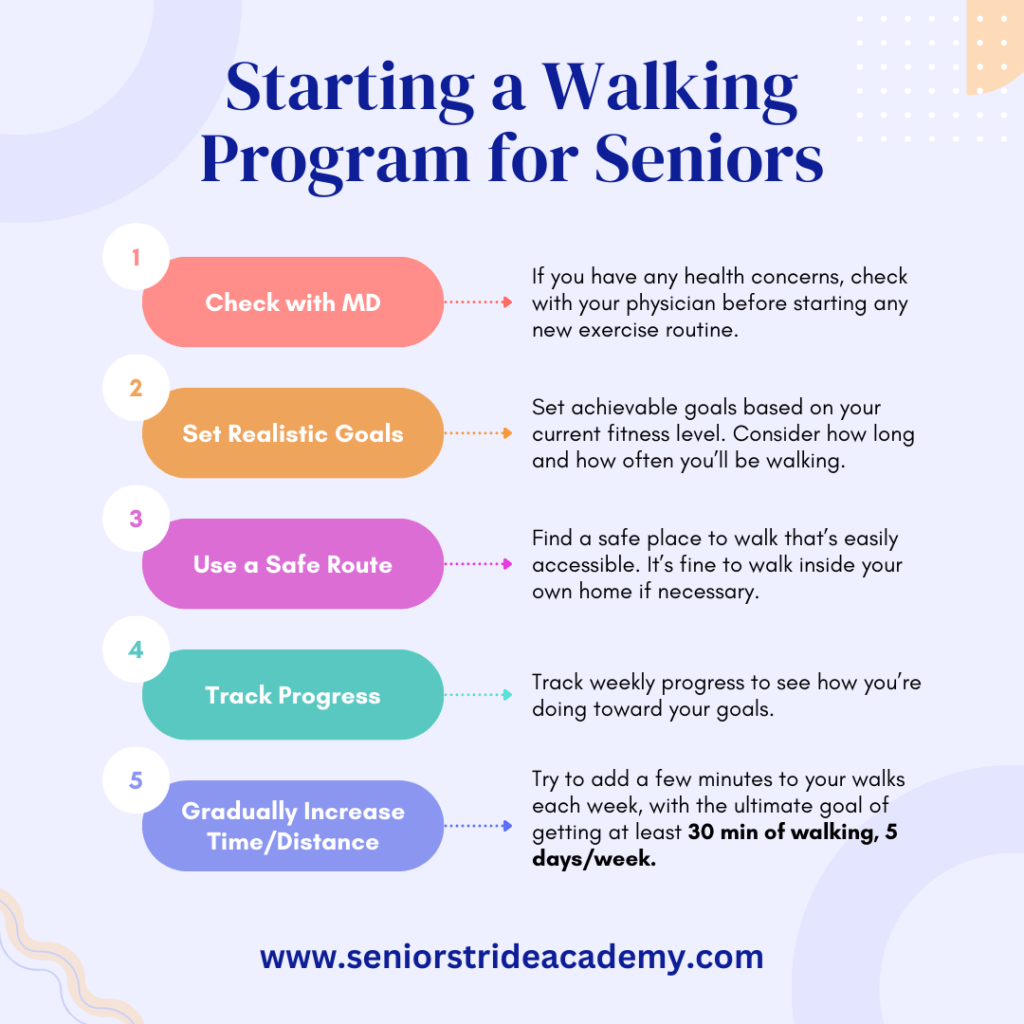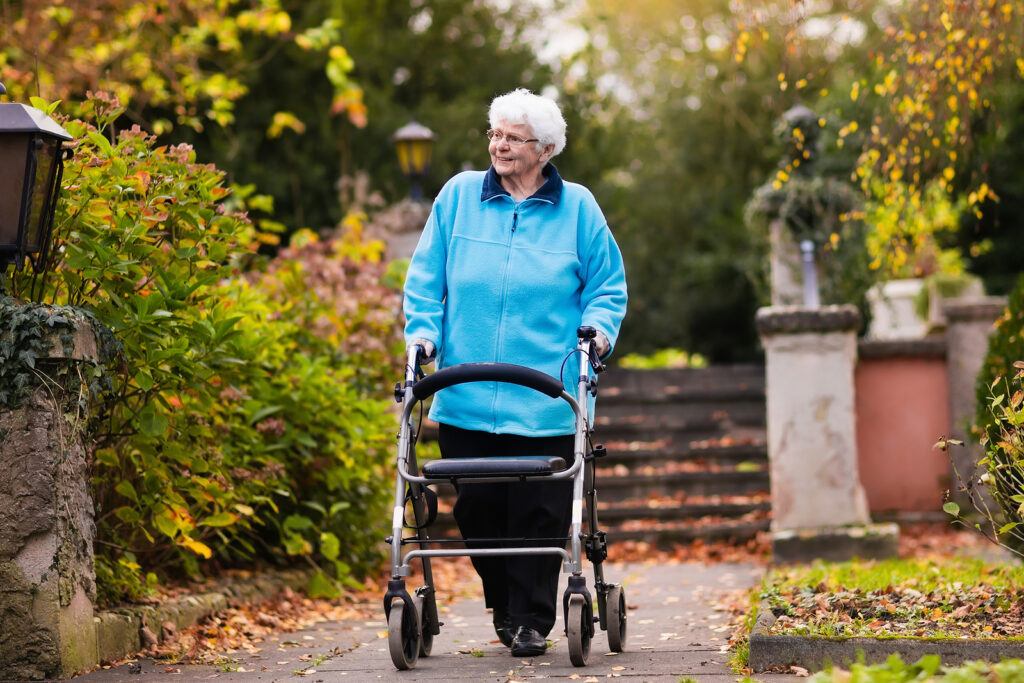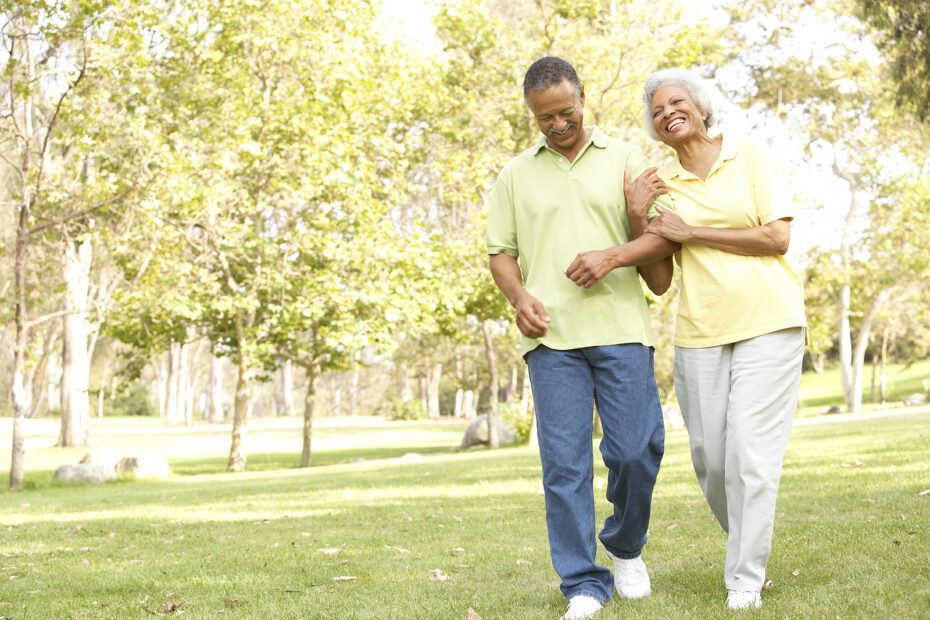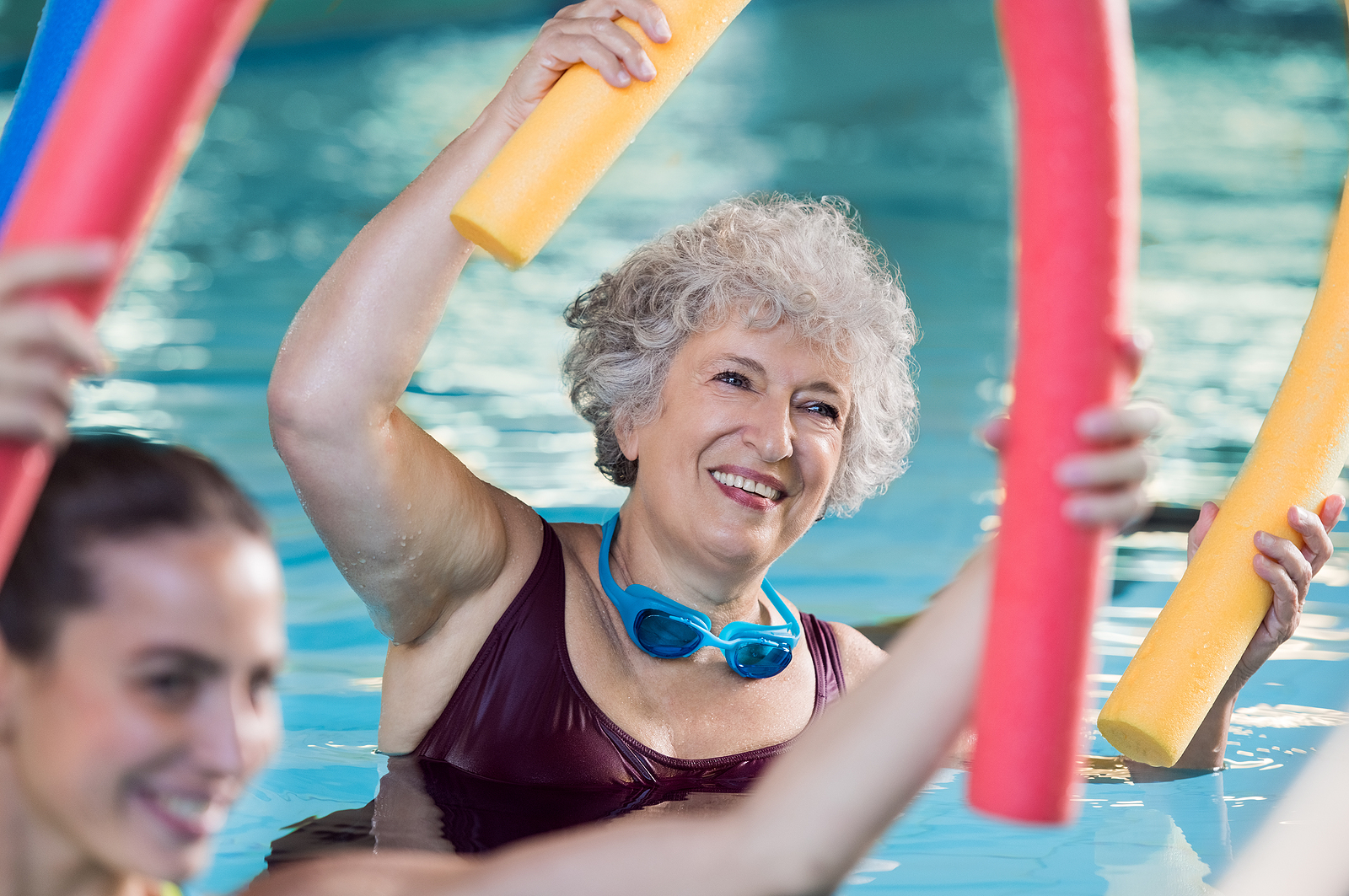Staying active is essential at every stage of life, but for seniors, regular exercise can significantly improve overall health and mobility.
And walking is one of the safest, most accessible forms of exercise for older adults.
It’s low-impact, requires no special equipment, and can be done just about anywhere – in other words, it’s kinda the perfect exercise for seniors.
But before you lace up and hit the road, it’s a good idea to have a game plan – and that’s where we can help.
In this guide, we’ll go over everything you need to know about starting a walking program and gradually progressing it over time.
So, if you’re a senior or caregiver looking to create a walking program, you’ve come to the right place.
Why Walking is Ideal for Seniors
Walking offers numerous benefits for all of us, but it’s especially great for older adults. Some of these advantages include:
- Improved cardiovascular health: Regular walking can help strengthen the heart, helping reduce the risk of heart disease.
- Better mobility and balance: Walking helps maintain muscle strength and coordination, which can reduce the risk of falls as we age.
- Enhanced mental health: Walking can reduce symptoms of anxiety and depression, while boosting mood and mental clarity.
- Social engagement: Walking with a group or a friend provides social interaction, which is important for mental well-being.
A structured walking program can help seniors enjoy these benefits while staying safe and motivated.
But how much walking should seniors be trying to get?
That’s a great question…
How Much Exercise Do Seniors Need?
The Centers for Disease Control and Prevention (CDC) recommends that older adults aim for at least 150 minutes of moderate-intensity or 75 minutes of vigorous-intensity aerobic exercise per week.
The CDC’s definitions for what counts as “moderate” and “vigorous” are a little vague, but generally speaking, here’s the difference:
- Moderate intensity is the equivalent of walking
- Vigorous intensity is the equivalent of jogging or running
Ok, so if we’re talking about starting a walking program, this will likely count as moderate-intensity activity for most seniors, but you can also use a 10-point scale to measure your intensity.
On this scale, where ‘0’ is the easiest and ’10’ is the hardest, if you’re working at a ‘5’ or lower, you can count your exercise as moderate-intensity.
Any activity you’d rate at a ‘7’ or higher would be considered vigorous.
So, cutting to the chase (and assuming walking is considered moderate intensity for most seniors), that means seniors should shoot for at least 150 minutes of walking per week.
And if we’re aiming for at least 150 min of walking per week, you could break it down like this:
- 150 minutes a week is roughly 30 minutes a day, 5 days a week.
- This can be divided into shorter sessions too though, like two 15-minute walks per day, making it more manageable and flexible.
In addition to aerobic exercise, it’s also recommended that seniors do muscle-strengthening activities (like resistance exercises or lifting light weights) at least 2 days a week as well.
This helps maintain muscle mass and supports strength and mobility.
For those who are new to exercise, it’s okay to start with shorter sessions and gradually build up to the 150-minute goal.
Even small amounts of physical activity are better than none and can provide health benefits.
Or as I often tell my patients, when it comes to exercise, anything is better than nothing.

Creating a Walking Program for Seniors
Alrighty, you know exercise is important and you’re motivated to get started, but where do you start? Well, consider the following:
Step 1: Consult with a Doctor
Before starting any new exercise program, it’s a good idea for seniors to consult their doctor.
This step ensures that their walking routine is safe and suited to their current health status.
If there are any existing conditions like arthritis, heart disease, or diabetes, the doctor may offer specific recommendations or limitations to consider.
That said, it’s highly unlikely that your doctor will advise you against starting a walking program or limiting how much walking you can do.
If you have COPD or other significant respiratory issues that cause you to become short of breath easily, it may be recommended for you to monitor your oxygen saturation level with a pulse oximeter during activity.
But even in these cases, walking is usually the most recommended exercise to improve endurance.
If you’re a healthy senior with no major medical problems you may be able to skip this step, but when in doubt, contact your physician to make sure a walking program is safe.
Step 2: Set Realistic Goals
When starting a walking program, setting small, achievable goals can help build confidence and consistency.
Encourage seniors to think about:
- How often they want to walk: For beginners, starting with 2–3 days per week is a good target.
- How long each walk will be: This depends greatly on the fitness level of the senior. Some seniors may have to start at a few minutes, while 10–15 minutes per session may be enough for other beginners. The key is to gradually increase time as strength and endurance build.
- The pace: Walk at a comfortable pace where they can still hold a conversation without becoming too winded. The goal is to be active without overexertion. Remember that 0-10 exertion scale? We want to be somewhere in the 4-6 range during our walks.
Example Goal:
- Walk for 10 minutes, 3 times per week at a comfortable pace.
Don’t forget about the 150 minutes/week recommendation from the CDC though – it’s important to try to progress toward that goal over time.

Step 3: Choose a Safe Walking Route
Safety is a top priority, especially for seniors. Select walking routes that are:
- Flat and even: Avoid paths with steep inclines or uneven surfaces that could lead to tripping.
- Well-lit: For those walking in the early morning or evening, it’s important to have enough lighting for visibility.
- Close to home: Walking around the neighborhood, in a nearby park, or even at a shopping mall can provide a familiar and safe environment.
For extra security, walking with a friend or in a group can make the experience more enjoyable and offer immediate assistance in case of a fall or other issues.
Also know that it’s ok to walk inside your home.
This may be more challenging in smaller homes, but there’s nothing wrong with doing laps up/down the hallway when necessary.
Walking is walking and seniors will reap the same benefits regardless of whether they’re inside or outside.
Step 4: Start with a Warm-Up and Cool-Down
Like any physical activity, walking should begin with a warm-up and end with a cool-down to prevent injuries.
Encourage seniors to:
- Warm-up: Start the walk slowly for 2–3 minutes to loosen muscles and increase heart rate gradually.
- Cool-down: Toward the end of the walk, slow down the pace for the last few minutes to help bring the heart rate back to normal.
Incorporating light stretches for the legs, arms, and back after walking can improve flexibility and reduce stiffness as well.
Step 5: Track Progress
Tracking progress helps seniors stay motivated and measure improvements over time. A simple walking log can include:
- Date
- Duration of walk
- Distance (if available)
- How they felt (energized, tired, any discomfort)
There are also many apps and devices like pedometers that can help track steps, making it fun and engaging to monitor progress.
Step 6: Gradually Increase Time and Distance
Once seniors feel comfortable with their initial walking routine, they can slowly increase the duration or frequency of their walks.
Here are some suggestions for progression:
- Increase time by 5 minutes: If they start walking 10 minutes a day, aim to increase this to 15 or 20 minutes over the course of several weeks. You could also try adding an extra minute or two each week.
- Walk more days per week: Gradually add more days until they’re walking 5 or more days per week.
- Increase distance: Once they feel confident with the time, they may want to cover longer distances, especially if they’re walking at a park or track.
Again, most seniors should be aiming for 30 minutes of total walking most days of the week (but this doesn’t mean you can’t progress to where you’re walking more than this).
And don’t forget, you can split your daily walking up into smaller chunks – the 30 minutes doesn’t have to be consecutive.
Walking for 15 minutes, 2x/day or 10 minutes, 3x/day offers the same benefits.
So please don’t get discouraged if 30 minutes sounds like an unobtainable goal, there are plenty of ways to get there!
Additional Tips To Consider
Stay Hydrated and Use Proper Footwear
Hydration is important, especially on warmer days.
Seniors should carry a small water bottle to sip from during and after the walk, as well as drink plenty of fluids for the remainder of the day.
Timing your meals/snacks so that you’ve got plenty of energy for your walk is always a good idea too.
Additionally, wearing proper footwear is important.
Comfortable, supportive shoes designed for walking can help prevent foot pain, blisters, and other injuries.
Shoes with good arch support, cushioning, and a non-slip sole are ideal.
Listen to Your Body
One of the most important rules in any exercise routine is to listen to your body. Seniors should stop if they experience:
- Sharp or persistent pain
- Shortness of breath
- Dizziness or lightheadedness
- Swelling or discomfort in the joints
If any of these symptoms arise, it’s important to rest and consult a healthcare provider if they persist.
Stay Motivated and Have Fun
Staying motivated can be a challenge for anyone starting a new exercise routine. Encourage seniors to make walking enjoyable by:
- Walking with friends or family: Social walks make the experience more enjoyable and rewarding.
- Walking in scenic locations: Whether it’s a local park, a botanical garden, or by the beach, changing the scenery can make each walk feel new.
- Joining a walking group: Many communities have walking clubs or senior walking programs that offer a great way to stay motivated and meet new people.
It’s Ok to Use Assistive Devices
I just wanted to point out that it’s ok to use canes, walkers, rollators, or any other assistive device while walking.
The first priority is always safety, so if you need an assistive device to improve you safety while walking, please use it.
You can still get a good workout in while using one.
Final Thoughts
Ok, I think that about does it.
When it comes to aerobic exercise, it’s hard to think of a better option for seniors than walking.
And participating in a walking program is a wonderful way for seniors to stay active, improve their health, and boost overall well-being.
By starting small, staying safe, and gradually increasing time and distance, seniors can reap the benefits of regular walking while reducing the risk of injury.
So, whether you’re a senior looking to start walking or a caregiver helping a loved one, use this guide to create a program that fits your needs and lifestyle.
Remember, the most important step is the first one!



